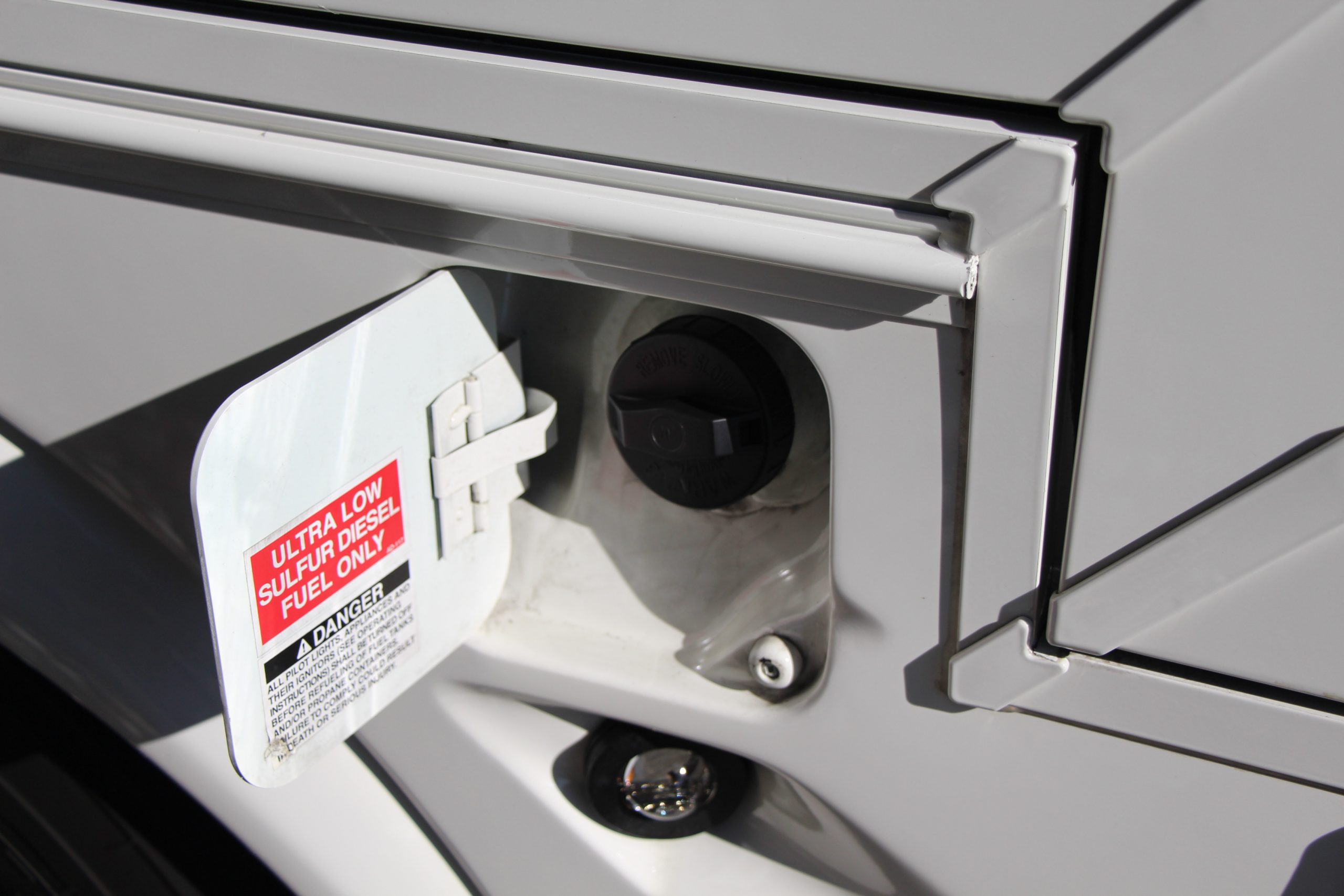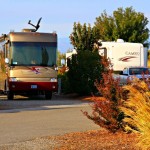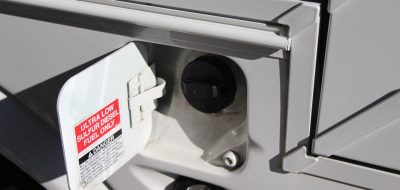Locking fuel caps are featured on many automobiles today. This was probably inspired by the high cost of fuel in past years. Most motorhome manufacturers, however, have never embraced this as a standard, or even a viable option offering. This leaves it entirely to the end user. But is there a need for such a security item?
Let’s look at the benefits that may be derived from adding locking fuel cap(s) to an RV.
Advantages
- Makes it far more difficult to steal fuel
- Protects from vandals contaminating the fuel
- Eliminates eager full service fuel attendant from putting the wrong fuel in prior to you getting out to the pump
- Controls who has access to the fueling port. This eliminates helpful family members or friends from accidentally putting the wrong fuel or mistaking it for a different fill port.
As far as disadvantages, there are probably none outside of the sourcing and the additional cost. Some pessimistic people have stated that they can cause the thieves to cut the fill hose between the tank and port, but come on! If you have to worry about such things you had better move your RV to a safer area.
So, where can you get locking fuel caps for your specific rig? Well, for some gasoline units, your local auto supply store can probably cross reference them. Some, however, with specialty chassis’ like Spartan, Freightliner or John Deere, may not be available in a cross reference chart. For these, a find-and-match procedure may be required.
To do this, we must first determine whether the cap is vented or non-vented. The method I use here may not sound like the best, but it works. Remove the existing cap and thoroughly clean the bottom of the threaded portion. Now, trust me! This isn’t “Candid Camera!” Put your lips over the end of the threaded part. Apply some vacuum by sucking with your mouth. If it is a non-vented type it will merely maintain the vacuum. Should it allow air in, preventing you from holding a negative pressure, it is a vented unit.
Once this is done, you must match up the physical thread size to be sure it will fit the fill port. For dual-fuel ported RV’s, like most diesel pushers, you will probably have to settle on having two different keys, as getting a pair with a matched lock may be nearly impossible to source. Here, painting one, or installing a rubber key guard, can make selecting the right one a no-brainer.
So, even with current fuel prices relatively low, the locking cap may still be a great feature to add to your RV.







Darlene
I have a Class A Pusher motorhome , I 2 sets of key one hangs on a hook near the door and the other I leave in the ignition, sometimes I have to leave the engine on to let it idle down before I turn it off . I have both sets of keys with name tags on them so I am not fumbling around looking for the right key . I do have the other set of keys on a neck leash so I have it on my neck at all times outside and I do lock my rig with I fill it up . Some times I never take it extra set of keys off until bedtime :))) I travel with show dogs and don’t want someone opening my door .
Jim
My Class A motorhome has a locking door over the fuel cap. It has a unique key that looks like two other keys for the RV (engine compartment key and ? key). That means that I have 6 keys for my RV.
So one real disadvantage is the extra unique key.
The biggest pain is with six keys I keep them all on one key ring (I have a second set that I keep in the safe). I have duplicate keys for the two entry/storage compartment keys that I keep on my car keychain. When I pull into a gas station (I have a gas motorhome) to get gas I pull up to the pump, stop with the engine running, get out of the coach to check the position of the gas hose to see if I am positioned properly. If I am not then I have my wife pull forward while I watch from the outside. She then turns off the engine and passes the keys out the window so I can open the gas filler door.
Most of the time I pull up close enough so we do not have to do the reposition but because of the key thing we still have to have her move to the drivers seat turn off the engine and pass out the keys . This always annoys me so I could do with out the locking door. Of course I can not leave it unlocked because the door would bang back and forth when I drive.
In 7 years of RVing I have never felt a need for a locking gas cap. I have never had anyone but me put gas in my rig (except NJ which requires an attendant, who I supervise).
I wish I did not have the locking gas filler door.
Jim